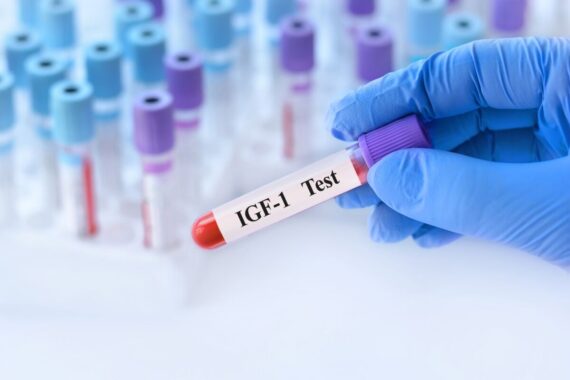Endocrinology specialist Dr Preethi Dissanayake discusses this uncommon presentation, in the latest in our series on conditions that GPs may only encounter once in their career
What is it?
Acromegaly is a rare pituitary endocrine disorder, characterized by excess Growth Hormone (GH) secretion and consequently, excess Insulin-like Growth Factor (IGF)-1 output from the liver. The prolonged exposure to high levels of GH results in bone and soft tissue overgrowth, progressive somatic disfigurement, metabolic derangement, and a wide range of systemic complications associated with increased risk of morbidity and mortality.
The diagnosis is often delayed with an average interval from the onset of the symptoms to diagnosis of approximately 10-12 years. The mean age at diagnosis is 40-50 years and the most common cause is a GH-secreting pituitary adenoma. A majority (nearly 75%) of patients with acromegaly will have a pituitary macroadenoma (>10 mm) at the time of diagnosis, giving rise to the complications of mass effect: headache, visual loss, and hypopituitarism. If the excess growth hormone secretion occurs before the fusion of the epiphyseal growth plates in a child or adolescent, acromegaly is called gigantism, and tall stature is a prominent feature.
How rare is it?
The global annual incidence reported in recent studies is 1.1 cases per 100,000 individuals, much higher than in the past. The prevalence is estimated to be 30-70 per million in Europe.
Clinical features
The clinical manifestations of acromegaly are either attributed to the GH/IGF-1 excess or the mass effect exerted by the tumor itself.
Almost all the patients with acromegaly have acral and soft tissue overgrowth, skin thickening leading to skin tags and swollen hands and feet, coarse facial features, prognathism, interdental separation, macroglossia and pins and needles due to carpal tunnel syndrome. Hyperhidrosis is also common while obstructive sleep apnea occurs in approximately 50% contributing to increased cardiovascular risk.
Excess GH increases metabolic risk with impaired glucose tolerance, diabetes, hypertension. It ultimately results in cardiomyopathy with ventricular hypertrophy. Patients have visceral enlargement, increasing the risk of colonic polyps. This may prompt surveillance for colonic carcinoma. Joint pain, fatigue, asthenia, and backache contribute to significantly reduced quality of life. Osteoporosis due to hypogonadism and risk of vertebral fractures contribute to a high morbidity.
Due to the direct tumor effect, patients can have hypopituitarism with multiple pituitary hormonal deficiencies, especially hypogonadism. Nearly 30% of GH-secreting adenoma co-secrete prolactin leading to hyperprolactinemia and subfertility, menstrual irregularities, hot flushes, vaginal atrophy with or without galactorrhea in females and loss of libido, decreased facial hair growth, and erectile dysfunction in males.
The mortality rate of patients with uncontrolled acromegaly is raised, primarily due to cardiovascular disease with a reduction of life expectancy on average as much as 10 years.
How to diagnose?
Acromegally is diagnosed biochemically, but the confirmatory or screening tests are not available at primary care setting. GPs who identify the clinical symptoms and signs above should refer to secondary care early for further evaluation.
Acromegaly is diagnosed with elevated IGF-1 and high GH levels that are not suppressed in an oral glucose tolerance test. In healthy individuals when blood glucose is rising, GH levels should decrease. Once the biochemistry is confirmatory, proceed with an MRI pituitary as 95% of the cases are due to pituitary somatotroph adenoma. Assessment of the pituitary function, visual fields, metabolic co-morbidities and screening for complications such as vertebral fractures with or without osteoporosis, colonic polyps/ cancer, and cardiomyopathy should be included in the complete workup.
Can be confused with…
Some patients presenting with severe insulin resistance, acanthosis nigricans and metabolic syndrome may have acromegalic features despite normal GH/IGF-1.
Clues for early detection
The physical changes involving facial and acral dysmorphia develop slowly over a long period, so patients or family members may not notice. A comparison of old photographs may be useful.
Changes in the shoe size, ring size or increased sweating, skin tags, acanthosis, joint pain, carpal tunnel syndrome, and backache may be the presenting features to the primary care physician. Also, hypertension, diabetes, or sleep apnea may be the first presentation to the GP. Having a high degree of suspicion when someone presenting with a collection of all these non-specific findings can aid early detection.
Management and prognosis
Acromegaly is associated with increased morbidity and mortality, but mortality usually returns to that of the normal population after appropriate treatment and biochemical remission. Therefore, the treatment goals of acromegaly are controlling the tumor mass, normalizing the GH/IGF-1 levels, improving the patient’s symptoms, and reversing the metabolic abnormalities.
Care should be provided as part of a pituitary multi-disciplinary team. Transsphenoidal pituitary adenoma resection is the first-line therapy. Successful surgery provides immediate reduction of GH levels and relief of the mass effect. However, not all patients achieve remission after surgery, and acromegaly treatment is frequently multimodal. Despite the first attempt, if there is a significant residual tumor or if the residual tumor is compressing vital structures, a second surgery is often offered because medical therapies will be more effective after debulking.
Currently, there are multiple pharmacological therapies available to be used in patients who fail to achieve remission after surgery or who are unsuitable for surgery. These include as somatostatin-receptor ligands (SRL) (lanreotide, octreotide), GH-receptor antagonists (pegvisomant), and, in selected cases, dopamine agonists (cabergoline). Those with a higher degree of resistance to SRL monotherapy should be considered for combination therapy with SRL-pegvisomant or second line SRLs such as pasireotide.
Radiotherapy is considered third line and reserved for cases after unsuccessful surgery and if medical therapy is unsuccessful, unavailable, or not tolerated. It can be used in combination with medical therapy.
Patients with acromegaly have complex health needs and should have lifelong follow-up with an endocrinologist experienced in pituitary conditions who is part of a recognized pituitary MDT. The close collaboration with primary care is pivotal to achieve optimal outcome.
Complications
Acute bleeding into the enlarged pituitary gland (apoplexy) can present with a sudden severe excruciating headache, visual loss, diplopia, and panhypopituitarism. A high degree of suspicion is needed as this can be life-threatening especially due to acute ACTH-Cortisol deficiency, resulting in hypotensive shock.
Dr Preethi Dissanayake is a Senior Clinical Fellow in Diabetes & Endocrinology at UCLH




 The benefits of Abbott’s point of care tests
The benefits of Abbott’s point of care tests







